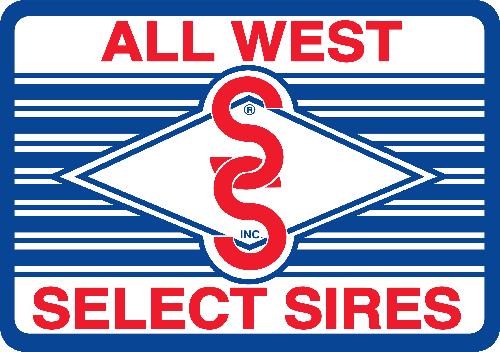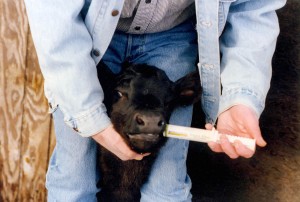It is hard to believe where time goes. I often reflect at how it seems we blink in the cattle business and the next season is upon us. Currently, fall calving is completing, and spring calving is just around the corner.
In the Western region of the nation, cattlemen plan to start calving on many different dates. Calving in the Northwest can start in December and extend to May – and even beyond. To ensure a profitable season, there are several variables to consider when planning for spring calving in any region.
Calving dates are determined by many factors, including spring turnout on public range, the desire to sell the heaviest calves possible at weaning or simply the fact that the producer no longer wants to calve during the most inclement times of the year for weather.
Dates tend to change over time for progressive cattleman as they figure out the best calving practice for their ranch with the least amount of stress to cow, calf and ranch families.
Unfortunately, it is often typical that calving season starts two weeks earlier than expected. This throws most producers off guard who have not planned ahead and face the lack of supplies and poor facility preparedness for those early calving cows.
In my market area in the Western region, a defined calving season is a profitable practice. Several studies on this subject have consistently addressed the profit potential of a uniform calf crop to market. Most producers will start calving heifers first and then the cow herd.
More producers are now utilizing the opportunity to artificially inseminate when breeding the heifers to genetically enhance the cow herd over time and still have heifers calving early.
Getting the facilities ready to be functional and safe for calves and the rancher alike is very important. It is necessary to develop a grocery list of items needed to have a successful calving season, as it provides helpful guidance on what might be needed the most.
Take note that each item on the list will need to be adjusted for each individual operator. The distance of your facilities from locations to purchase these items may be one of the biggest considerations in keeping fully stocked and having the necessary supplies on hand when you need them most.
Keeping stress low
The importance of low-stress cattle handling and animal welfare cannot be stressed enough when preparing for calving, as your heifers and cows are carrying next year’s profit center. Make sure you walk through the facility with an eye looking for cow bottlenecks and hazards.
Additionally, check that the facility has no protruding nails, bolts, boards or anything that can injure a cow by bruising or cutting. Any type of injury or complication with pregnancy will lead to less pounds of calf to sell or a good cow becoming a cull.
Low-stress cattle handling not only includes the cow but also the calf during and after birth. Through observation and conversation with ranchers, I have concluded that those who use the low-stress cattle handling techniques, combined with good cow nutrition and excellent cow herd immunization, reap the most benefits.
It is amazing to see the rewards of adopting these management techniques, to see a change in overall herd health, reduction of respiratory problems and more pounds of calf to sell.
For healthy calves to be produced, careful planning and action on an effective calving system is required. One effective calving method is the Sandhill Calving System, which can substantially reduce scours. This system of managing movement of cows and calves uses larger pastures for calving rather than animal-dense calving lots.
Cows are turned into the first established pasture after calves are born. After two weeks, all cows that have not yet calved are moved into a separate pasture. This process continues for several weeks until cow-calf pairs are in multiple pastures.
This method helps to keep the calf age similar, reducing the transfer of scours from older calves to younger calves. It will also reduce the manure load on the ground, which is a major cause of providing the infective agents.
Putting out fires
Even when establishing the most thorough precautions, there are many ranchers that will experience problems during the calving season with scours, pneumonia or a myriad of other health issues. What can we do as producers to help minimize the problems that arise during calving time?
This question does not have one primary solution for every producer, making it essential to establish a good working relationship with your veterinarian. Veterinarians are a great resource to help solve health issues on the ranch, but producers must frame the conversation effectively to receive the most beneficial medical advice for the herd.
For example, a history of scour problems demands a sit-down consultation with a veterinarian to discuss what may have caused the health issue and formulate a plan. While establishing a long-term plan will involve cost, strong and healthy calves will sell many more pounds of beef, reaping financial rewards to pay for the consultation, diagnostics and treatment of an outbreak many times over.
After establishing a plan with a veterinarian, learn what is causing health issues, such as scours, and work toward treatment. Many ranchers instinctively reach for an antibiotic as soon as a calf begins to scour without knowing the cause.
Scours can be due to any number of reasons, including bacterial or viral infectious agents, parasites or even nutritional causes. Death is often due to dehydration, regardless of the cause. Instead of reaching for an antibiotic when a calf scours, first get the calf rehydrated and then treat the infection when needed.
Plan for worst, hope for best
If calf scours are a chronic problem in your operation, you can boost colostrum quality by vaccinating your dry cows. The dry cow vaccination program helps build the cow’s immunity level within, which is then passed to the calf via colostrum. Talk to your veterinarian and plan a good dry cow vaccination program, depending on the causative agents.
It is good management to plan for the worst and hope for the best, utilizing your toolkit of the best management strategies of treatment and supportive therapies for calves. Treatment protocols of scours are best left to a licensed veterinarian, but there are many ways the producer can support calves through this stressful time.
Health-supportive products such as electrolytes, energy drenches and probiotics, along with effective treatment protocols, should be used with struggling calves to get them healthy, growing and making money.
Electrolyte products are essential in getting scoured calves rehydrated, as dehydration is one of the major killers in scouring calves. Waiting too long for supportive therapies or treatment can enhance secondary health problems, so keep vigilant in watching newborn calves and start supportive efforts at the first signs of a problem.
A healthy and well-planned spring calving season can produce greater profit long term. Even while spring seems quite far into the future, it is necessary for producers to position themselves now in order to have a safe and strategic season.

Kelton Spain
Kelton Spain is a national accounts manager for Vets Plus Inc. He holds a bachelor’s degree in animal science and a master’s degree in agricultural and extension education.


 .
. .
. .
. .
. .
. .
.